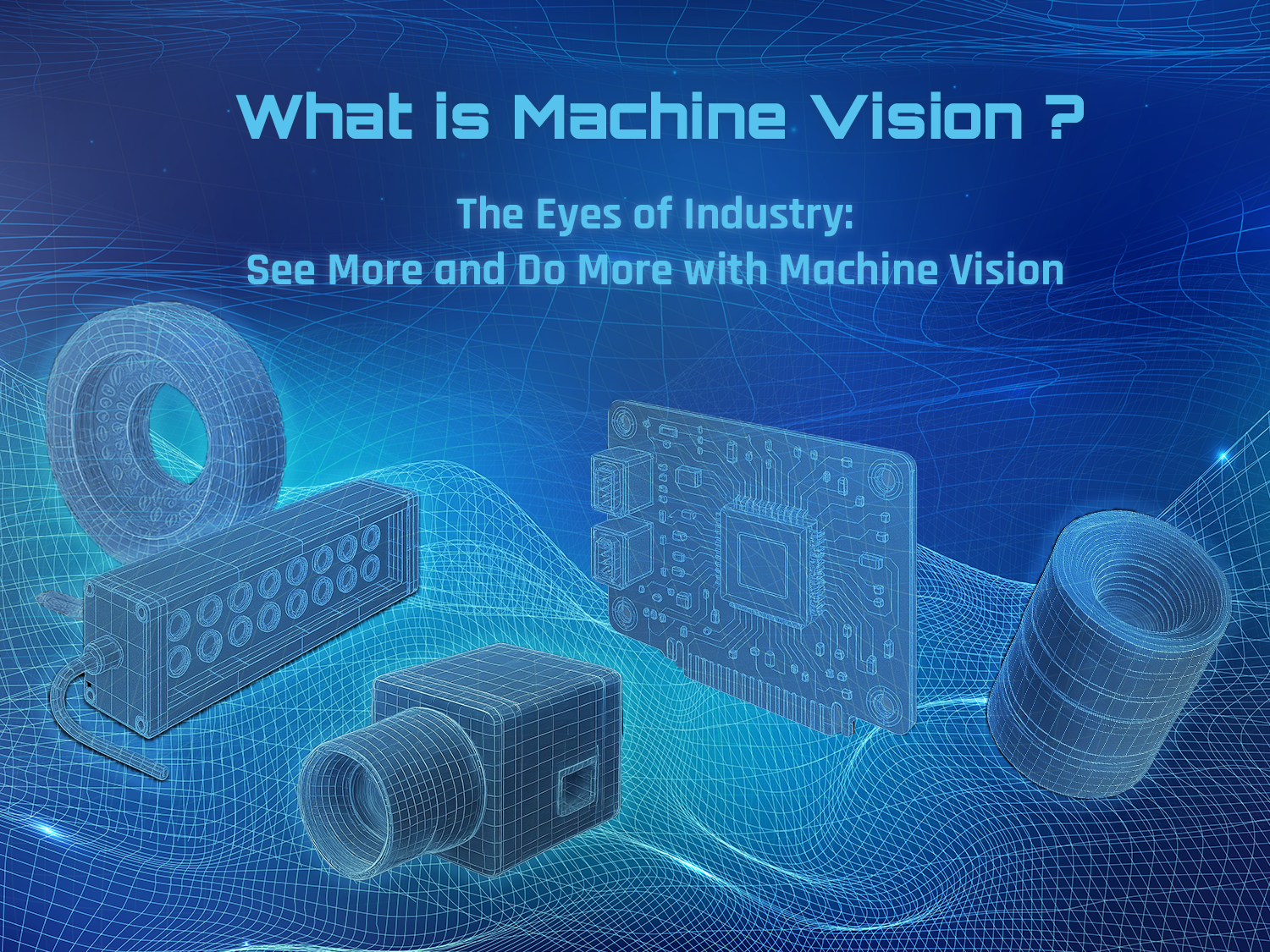What is Machine Vision?
Machine vision is a powerful technology that acts as an eye of computers and machines to automate the capturing, processing, and interpreting of visual information.
As a key technology behind Industry 4.0 and smart factories, machine vision provides organizations with the capacity in achieving higher precision, faster output, and greater consistency.
Step-by-Step on How Machine Vision Works
Step 1: Image Acquisition
Machine vision systems start by capturing high-resolution images using components such as industrial cameras, lens and illumination to highlight critical features.
Step 2: Image Processing
Advanced machine vision software processes the captured images, enhancing important details including edges, textures, patterns and colours for precise analysis.
Step 3: Feature Extraction and Analysis
Algorithms analyze the images for defects detection, dimensions measurement, perform product quality verification, barcodes reading, or recognize objects with high precision.
Step 4: Decision Making
Based on the analysis, the machine vision system determines whether a product meets quality standards, needs sorting, or requires further inspection.
Step 5: Action Execution
The system sends output signals to automation equipment, such as robotic arms, conveyor belts, or reject mechanisms, enabling real-time quality control and process optimization.
Components in a Machine Vision System
Machine vision systems combine advanced hardware and software to capture, process, and analyze images for inspection, measurement, guidance, and automation tasks. They typically include lighting, lens, camera, image processing, software, and communication interfaces.
Hardware Components:
Cameras: Capture images or video of the object or scene.
Types: industrial cameras, smart cameras, line scan cameras, 3D cameras.
Lenses: Focus the image onto the camera sensor. Choice depends on field of view, resolution, and working distance.
Lighting: Provides consistent illumination to highlight features.
Types: LED lights, ring lights, backlights, coaxial lights, etc.
Frame Grabbers: Interface cards that capture and transfer images from cameras to computers, especially in high-speed applications.
Processing Units: Analyze captured images. Can be a PC, embedded system, or the camera itself (smart camera).
Software Components:
Image Acquisition Software: Controls camera settings and captures images.
Image Processing Software: Enhances, filters, and prepares images for analysis (e.g., noise reduction, contrast adjustment).
Vision Algorithms: Detect edges, find patterns, recognize shapes, count objects, measure dimensions, etc.
Machine Learning/AI Modules: For complex tasks like defect detection, classification, or OCR (optical character recognition).
Application Software: Interfaces the machine vision system with external systems (e.g., PLCs, robotic arms, factory automation networks).
User Interface (UI): Allows human operators to monitor, adjust parameters, and troubleshoot the system.
Benefits of Machine Vision Systems
Machine vision offers significant advantages for industries aiming to boost efficiency and quality control.
Increased Accuracy and Consistency: Machine vision systems detect defects, measure dimensions, and verify product quality with much higher precision and consistency compared to human inspectors.
Higher Speed and Throughput: Inspections, measurements, and sorting happen in milliseconds, allowing high-volume production lines to operate without bottlenecks.
Cost Savings: Reduces the need for manual inspections, lowers labor costs, minimizes production errors, and cuts waste from defective products.
Improved Product Quality: By identifying flaws early, machine vision ensures only products meeting strict quality standards reach the market.
Detailed Data Collection: Vision systems can store inspection images and data, providing valuable insights for process improvement, traceability, and reporting.
Machine Vision Applications in Industries
Machine vision technology is widely adopted across various industries to enhance inspection, automation, and quality control. Common industries using machine vision include:
Automotive Industry: Defect detection, assembly verification, surface inspection, and robotic guidance in manufacturing lines.
Electronics and Semiconductor Industry: Essential for inspecting circuit boards, detecting micro-defects, aligning chips, and ensuring precise assembly.
Pharmaceutical and Medical Device Industry: Deployed for packaging inspection, label verification, and ensuring the integrity and safety of medical products.
Food and Beverage Industry: Applied for contaminant detection, packaging inspection, label accuracy, and monitoring food quality.
Consumer Goods Industry: Used for inspecting packaging, product assembly, barcodes, and cosmetic defects in goods like appliances, toys, and personal care products.
Logistics and E-commerce: Machine vision helps automate parcel sorting, barcode scanning, and quality verification during warehouse operations.
Aerospace Industry: Critical for precision inspections, non-destructive testing, and ensuring the structural integrity of components.
Textile Industry: Used to detect fabric defects, colour inconsistencies, and monitor the weaving process in real time.
Printing and Packaging Industry: Applied for print quality inspection, label verification, and detecting defects in packaging materials.
Solar and Renewable Energy Industry: Used for inspecting solar cells, detecting micro-cracks, and ensuring the performance of energy products.
Get Expert Recommendations for Your Machine Vision Needs
CCS Asia is your trusted partner in machine vision solutions, offering a wide selection of components including LED illumination, industrial cameras, and lenses. Our products are widely used across various industries.
Reach out to us today for expert recommendations tailored to your machine vision needs by clicking this link:

